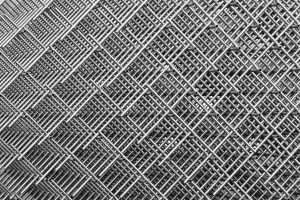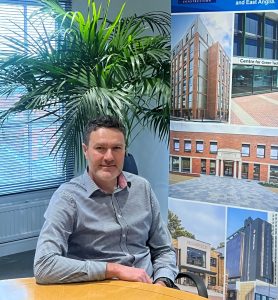
5 Industries That Rely on Manufactured Steel – And Why Precision Matters
Manufactured steel is one of the few materials that can move from design intent to site reality with very little “interpretation”, as long as it’s made precisely and backed by the right paperwork. That matters even more in Great Britain now that CE marking is recognised only until 30 June 2025, and from 1 July 2025 CE marking is no longer acceptable in GB for in-scope construction products, putting UKCA marking and clear conformity evidence firmly in the spotlight. Steel is often chosen because it’s predictable: you can design it, fabricate it, deliver it, and assemble it quickly. But that promise depends on components arriving to spec, fitting first time, and carrying the documentation that proves they’re compliant. That’s why, when teams are sourcing fabricated sections and components from suppliers such as NW Metal Sections, the conversation quickly turns to tolerances, traceability, and the paperwork trail that makes sign-off straightforward. The compliance angle isn’t abstract either. UKCA marking is used for goods being placed on the market in Great Britain, and it demonstrates compliance with the appropriate designated standard for a product; for fabricated structural steelwork specifically, the designated standard is BS EN 1090-1, and fabricated structural steelwork delivered to a site in GB must be UKCA marked (or CE marked only up to 30 June 2025) against BS EN 1090-1. So, instead of treating “precision” as a nice extra, it’s more useful to see it as a practical risk-control habit that helps projects run smoothly. Let’s look at five industries that rely on manufactured steel, and what precision really changes for safety, performance, and build quality. Construction & structural engineering In mainstream building work, manufactured steel is everywhere you’d expect: primary frames, beams and columns, connection plates, stairs, and all the secondary pieces that make a structure buildable in real life. What’s easy to forget is how many other decisions get anchored to that steel geometry. Set-out lines, floor zones, façade interfaces, service penetrations, fire protection thicknesses, handrail runs. When the steel arrives accurately made, you don’t just get a faster steel erection. You get fewer micro-delays rippling through the rest of the build. This is one reason steel keeps such a strong position in UK structural framing. BCSA reported that steel took the greatest market share at 48.6% in 2023 compared with other framing materials. That’s a market signal that a lot of teams still value the speed and certainty that good steelwork can bring. Precision is how you protect that certainty. Not in a perfectionist way, but in a practical one: holes line up, cleats don’t need “encouragement”, and tolerances don’t get spent on site trying to correct something that should’ve been right before it arrived. And there’s a quiet confidence boost that comes with it. When the steel package is consistent and well evidenced, design teams and site teams can spend their time on coordination and quality, rather than detective work. Infrastructure & civil engineering Infrastructure and civil engineering projects tend to have one thing in common: interfaces. Lots of them. Bridges, gantries, stations, platforms, and access structures often connect to existing assets, third-party land, live highways, or rail environments. That leaves less room for improvisation, and it makes precise manufactured steel feel less like “nice workmanship” and more like a planning tool. In these settings, precision supports safety in a very grounded way. If parts fit first time, people spend less time doing awkward work at height, less time around temporary arrangements, and less time trying to resolve clashing details while the clock is ticking. It also supports performance, because infrastructure often lives with cyclic loading, weather exposure, and long inspection intervals where durability details matter. There’s also a broader supply reality behind the scenes. The UK government’s steel strategy consultation notes that the UK currently has a demand for steel of around 9 to 11 million tonnes a year. That’s a lot of material moving through many hands, which means the winners tend to be the supply chains that are organised, traceable, and consistent. A useful mindset for civil teams is to treat precision like good traffic management. It doesn’t make the project “fancy”. It makes it calmer. And calmer tends to be safer. Industrial & commercial buildings Industrial and commercial buildings are where steel’s repeatability really gets tested. Big footprints, regular grids, long spans, and plenty of follow-on systems that want everything to be straight and true: cladding rails, dock levellers, mezzanines, sprinkler mains, lighting, racking, and signage. When steel is accurately fabricated, that repetition becomes a genuine advantage because every bay behaves like the last. BCSA’s 2024 annual review put a number on how much steelwork runs through the UK economy and where it’s going. It stated that consumption of constructional steelwork remained at 893,000 tonnes in 2023, and it also noted industrial buildings increased by 2.2% to 450,000 tonnes in 2023. For anyone working around logistics, distribution, retail parks, or large commercial shells, those figures will feel familiar. Where precision matters most here is build quality at speed. Industrial projects often have hard operational dates, tenant fit-outs waiting in the wings, and strict rules about watertightness and floor performance. A steel frame that arrives cleanly made helps the project hit the point where it can be closed in, serviced, and finished without endless snag loops. Here’s the thought-provoking question that’s worth asking early, before the first fabrication drawings are even signed off: if the whole building typology is based on repetition, why accept site fixes that break the repeatability you’re paying for? Automotive & manufacturing facilities Manufacturing sites don’t just “contain” processes. They support them. In automotive and broader manufacturing facilities, steel shows up as the building frame, of course, but also in the steelwork that makes the place usable: equipment bases, access platforms, edge protection, service gantries, and structural supports around plant. It’s the kind of steel that has to live alongside motion, vibration, heavy loads, and frequent operational changes. That’s why precision lands differently in this sector. In

AM ALPHA has appointed JLL as a letting agent for Manchester’s Rylands development
AM ALPHA has appointed commercial property experts JLL as a letting agent on its pioneering Manchester scheme, Rylands. AM ALPHA, a Munich based privately owned real estate family office, has recruited the global real estate advisory firm to assist with sourcing tenants for the impressive mixed-use development. Rylands, located in the former Debenhams building on Market Street, is currently undergoing extensive refurbishment. Construction work is being carried out by local contractor, Domis, who have recently completed the demolition works. The project is set for completion in 2027. Plans include a four-storey extension to create an additional 40,000 sq. ft of office space. Upon completion, it will transform the landmark listed building into a mixed-use development comprising retail, leisure and office space. JLL’s appointment follows shortly after the Rylands project team announced Market Place Food Hall as its first tenant. The popular street food collective has committed to a 15-year lease covering approximately 1,300 sqm. Paul Hodgkiss, Senior Project Manager at AM ALPHA said: “JLL’s experience and deep understanding of the UK office market makes them the ideal partner to bring this iconic Manchester landmark back to life. Securing a renowned tenant like Market Place so early into the project is incredibly exciting and has already generated strong interest. We aim to create the best office space in Manchester, and our agents are already playing a crucial role in helping us showcase the product to national and international businesses.” JLL joins existing agency partners OBI Property and Barker Proudlove following the firm’s official appointment in July. OBI will work collaboratively with JLL to source tenants for the office space, while Barker Proudlove will continue to oversee retail lettings. Devany, Head of Office Agency North West said: “Rylands is a transformative landmark office scheme not just for Manchester but the wider UK regions. We’re delighted to collaborate with the existing agency team, leveraging JLL’s market-leading expertise to support AM ALPHA’s vision. Having witnessed Domis’ exceptional construction progress firsthand, it’s clear that Rylands will emerge as a defining office destination that beautifully preserves its rich heritage while delivering architectural excellence exactly when Manchester faces its most significant Grade A office supply shortage.” Building, Design & Construction Magazine | The Choice of Industry Professionals

Clegg Construction appoints new commercial manager
Contractor Clegg Construction has strengthened its team with the appointment of a new commercial manager. Andy Bore will be the commercial lead on the Midway Karparc project – an innovative scheme in Newcastle-under-Lyme to redevelop a 1960s former multi-storey car park into apartments which is being undertaken by Clegg Construction for Capital & Centric. He will also provide commercial and contractual support across the wider business and assist with the development, training and mentoring of the commercial team. With 24 years of working in the construction sector for companies such as Interserve, Kier, Thomas Vale Construction, nmcn and most recently GF Tomlinson, Andy brings a wealth of experience to the role. Clegg Construction Commercial Director Dan Manley said: “We are very pleased to welcome Andy to the Clegg Construction team. His extensive experience and proven track record in the industry will be an asset to our business. “Andy possesses expertise that I am sure will bring a positive impact, not only to the Midway Karparc project but across our wider operations as we continue to deliver successful developments for our public and private sector clients.” Andy, has worked on a wide range of schemes – both new build and refurbishment – including schools, shopping centres, a leisure centre and swimming pool, office block, student accommodation, high end housing, bio mass facility, heritage projects, and a few blue light schemes. Andy said: “I am excited to have started a new role as commercial manager at Clegg Construction – bringing my experience and expertise to the company at an exciting time when there is much in the pipeline to look forward to and celebrate.” With its headquarters in the Lace Market, Nottingham, Clegg Construction is a Midlands, East Anglia, and Yorkshire-based construction firm specialising in the delivery of public and private sector projects. The company works with organisations of all sizes and specialities across a comprehensive range of sectors. For more information visit www.cleggconstruction.co.uk Building, Design & Construction Magazine | The Choice of Industry Professionals

McLaren Construction Midlands and North raises over £5,000 for The Lighthouse Club and Motor Neurone Disease Association
McLaren Construction Midlands and North is proud to announce that its annual charity fundraising efforts have raised £5,271.25, supporting this year’s chosen charities: The Lighthouse Club – the construction industry charity, and the Motor Neurone Disease Association (MNDA). The fundraising total includes £4,345.00 raised through events and donations including Christmas Jumper Day, plus an additional £926.25 through Gift Aid. The Midlands and North team have led a range of fundraising activities across the region this year, supported by McLaren colleagues, supply chain partners, subcontractors and external businesses. A key highlight of the fundraising programme was a raffle supported by the generous donation of prizes from McLaren’s supply chain and partners. Contributions included a Sainsbury’s voucher from EH Smiths, four Aston Villa tickets donated by DP Interiors, two Liverpool FC tickets from Cara Brickwork, an iPad from Taurus Electrical, a Celtic Manor stay from Oakwood, a Harrods hamper from Grimes Finishings, and a Coventry hotel stay from Village Hotels. They also included an afternoon tea experience from IHG, a £250 cash donation from MJS, breakfast and cocktails from Albert’s Schloss, a gift card from Fazenda, a meal and cocktails for two from Revolution, a television donated by Miles, and significant £1,000 cash donations from both McCoys and MPB. Luke Arnold, Regional Director of McLaren Construction Midlands and North, said: “A big thank you to Lucy Cramp, Kath Sheppard and Tina Shelton, for all their efforts working tirelessly to bring all of this together, a lot of work goes into this behind the scenes to make this possible and improving the cash raised year on year!” Gary Cramp, Managing Director of McLaren Construction Midlands and North, said: “We are incredibly proud of the teamwork, generosity and community spirit shown across our Midlands and North region. Supporting The Lighthouse Club and the Motor Neurone Disease Association is deeply important to us, and reaching this fundraising milestone reflects the dedication of our people and our partners. A huge thank you to everyone who contributed.” Building, Design & Construction Magazine | The Choice of Industry Professionals

Whitbread wraps up 2025 with planning consent at Dorset House, SE1
Planning permission for the conversion of the 90,000 sq ft office brings hub by Premier Inn a step closer to London’s World-Famous South Bank Whitbread, the parent company to Premier Inn, the UK’s largest hotel business, has successfully secured planning permission to convert Dorset House, a former office building on Stamford Street in Southwark (SE1), into a 421-key hub by Premier Inn. The permission rounds off an especially active 2025 for the business in Central London where it has acquired four development sites for its Premier Inn and hub by Premier Inn brands since January 2025. Collectively, the four locations add close to 1,000 bedrooms – and more than 262,000 sq ft of development space – into Whitbread’s secured development pipeline in the capital. Dorset House brings the hub by Premier Inn brand south of the River Thames for the very first time at a location that boasts Waterloo Station, Blackfriars Station, London’s South Bank and the Royal Festival Hall within a ten-minute walking distance. Whitbread acquired the 90,000 sq ft building freehold in May [2025] and quickly began conversations with Southwark Council on the change of use of the nine-storey vacant office into a hub by Premier Inn hotel. The intention is to add the compact hub bedrooms within the existing floorplate and introduce a new hotel entrance on Stamford Street, with the basement-level F&B space visible through cut-out concrete sections on the ground-floor. Construction work is expected to begin in the second half of 2026 with a target date for opening in summer 2028. Jonathan Langdon, Senior Acquisition Manager for Whitbread, said: “Whitbread’s reliable and affordable hotels are ingrained in London life and we’re taking full advantage of opportunities to expand our network further for our guests. “The buildings we have acquired in 2025 bring four outstanding hotel locations into our secured pipeline in places where we are either not yet represented or are responding to strong, year-round demand from our customers. “All four acquisitions demonstrate Whitbread’s ability to spot and convert excellent opportunities to grow our business, deploy capital strategically, and work through planning risks to successfully grow our estate. “Achieving planning permission at Dorset House rounds off an especially active period for Whitbread’s Central London team in 2025, and we are moving quickly to progress our pipeline hotels into construction and onto trading as soon as possible.” Reflecting wider changes in the demand for office properties across the UK, all of Whitbread’s property acquisitions in Central London are office-to-hotel conversions. They include: Collectively the acquisitions total more than £100 million of direct investment. All the new hotels will be powered solely by electricity generated from renewable sources in line with Whitbread’s sustainability programme, Force For Good. Whitbread’s London hotels represent 18% of the company’s c. 86,000 bedroom-strong network in the UK & Ireland and an important growth market for both brands as the company works to expand its hotel estate by 45% to a long-term potential target of 125,000 UK&I rooms. Building, Design & Construction Magazine | The Choice of Industry Professionals

McLaren Construction Midlands and North appointed to deliver Upper Brook Street student scheme in Manchester
McLaren Property, the leading residential and student accommodation developer, have formally appointed McLaren Construction Midlands and North as main contractor for the landmark Upper Brook Street student accommodation development in Manchester. The project marks the second major scheme in the city where the two McLaren divisions are collaborating, following their successful partnership on St Gabriels Court. Early works have been progressing at pace, with both tower cranes now fully installed onsite. Ground clearance and preparation works are complete, alongside the installation of temporary site facilities. Piling has also concluded with 219 piles installed and concrete bases formed to support the two new residential buildings and cranes. The team aims to have slip-form rigs assembled before the Christmas period, enabling the concrete frame to commence early in the new year. McLaren Property’s £160m Upper Brook Street development will be forward funded by L&G, a leading direct investor, lender, developer, and operator in residential real estate, with the partnership delivering the purpose-built student accommodation scheme, comprising c.272,854 sq ft across two buildings of 9-storey and 23-storeys, totalling 737 student bedspaces (288 studios and 449 cluster bedrooms) along with a range of shared amenities including a gym, fitness studio and collaborative study and social spaces. Upper Brook Street is just south-east of Manchester city centre, near the Russell Group’s University of Manchester and is part of the Oxford Road Corridor. It is widely acknowledged as a growing hub for students and research. The new student accommodation building will include a community facility, café and new accessible public realm with new trees, and a commitment to achieve high levels of sustainability to include BREEAM excellent, EPC A and Platinum Wired Score ratings. Extensive hard and soft landscaping will create new public realm for residents and the surrounding community. Modern methods of construction will play a central role in the build, and the project incorporates a full concrete frame with fully unitised prefabricated concrete panels, complete with integrated brickwork and windows to drive efficiency and quality. Bathroom pods manufactured off-site by Walker Modular will further streamline delivery. The project is targeting BREEAM Excellent and an EPC A rating, with completion set in time for the 2028 academic year. Alongside its technical and environmental ambitions, the scheme places strong emphasis on social value and the project team is partnering with local community groups and the Salvation Army to deliver initiatives that exceed contractual social value commitments. Luke Arnold, Regional Director at McLaren Construction Midlands and North, said: “We are delighted to be appointed to deliver this important scheme in the heart of Manchester. Upper Brook Street represents not only a significant investment in the city’s student living offer but also an opportunity to showcase high-quality construction, modern methods of delivery, and meaningful social value.” David Atherton, Divisional Managing Director at McLaren Property, said: “This is the second project we are delivering alongside McLaren Construction in Manchester. We are excited to bring forward another best-in-class student accommodation development, adding to our strong pipeline across the UK. As we move into the delivery phrase, all those involved in the project are fully focused on completing an exemplary building, one that the McLaren teams and the city can be very proud of.” Building, Design & Construction Magazine | The Choice of Industry Professionals

